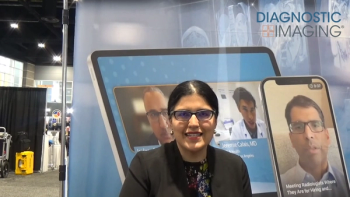
Can AI Improve Triage of CT Pulmonary Angiography Exams for Acute PE?
A recent study showed that artificial intelligence (AI)-based worklist reprioritization led to a mean reduction of 12.3 minutes in radiology report turnaround time for positive computed tomography pulmonary angiography (CTPA) exams that were positive for pulmonary embolism.
Emerging research suggests that artificial intelligence (AI) can improve the prioritization and efficiency of interpreting computed tomography pulmonary angiography (CTPA) exams for cases of suspected pulmonary embolism (PE).
For the retrospective study, recently published in the
According to the study, use of the AI tool resulted in reprioritization of 148 CTPA exams (12.7 percent). For CTPA exams that were positive for PE, the researchers found no difference in read times with the AI tool but did note significant reductions in mean wait time (21.4 vs. 33.4 minutes) and mean radiology report turnaround time (47.6 vs. 59.9 minutes).
“Delays in reporting urgent findings may be particularly likely to occur for examinations ordered with routine priority, which are typically inserted at the bottom of the worklist with the implicit assumption that the probability of a positive finding is less than in a patient whose examination was ordered stat or urgent,” wrote lead study author Kiran Batra, M.D., an associate professor of radiology at the University of Texas Southwestern Medical Center in Dallas, and colleagues.
“A method that identifies acute findings on routine examinations and reprioritizes these examinations to the top of the worklist thus has the potential to substantially impact radiologist workflow and yield more rapid reporting of urgent findings.”
(Editor’s note: For related content, see “
The study authors pointed out that the AI tool does provide an additional series of images for review, which could possibly lead to increased time for interpreting images. However, the researchers found no significant difference in read times with the AI tool, noting a mean of 26.3 minutes with AI versus a mean of 26.5 minutes with pre-AI assessment).
“The lack of a significant difference in read times supports the worklist reprioritization as the underlying mechanism by which implementation of the AI tool led to earlier reporting of PE-positive examinations,” emphasized Batra and colleagues.
Beyond the inherent limitations of a retrospective study conducted at one institution, the researchers noted they did not assess factors such as radiologist experience and examination location in relation to the impact of the AI worklist tool. The study authors also pointed out that the sensitivity rate for the AI tool was lower than the rate reported in previous studies of the AI worklist tool. A failure with automated image transfer to the AI tool resulted in the exclusion of 223 CTPA exams in the post-AI period, according to Batra and colleagues.
(Editor’s note: For additional CT-related research, visit
Newsletter
Stay at the forefront of radiology with the Diagnostic Imaging newsletter, delivering the latest news, clinical insights, and imaging advancements for today’s radiologists.




























